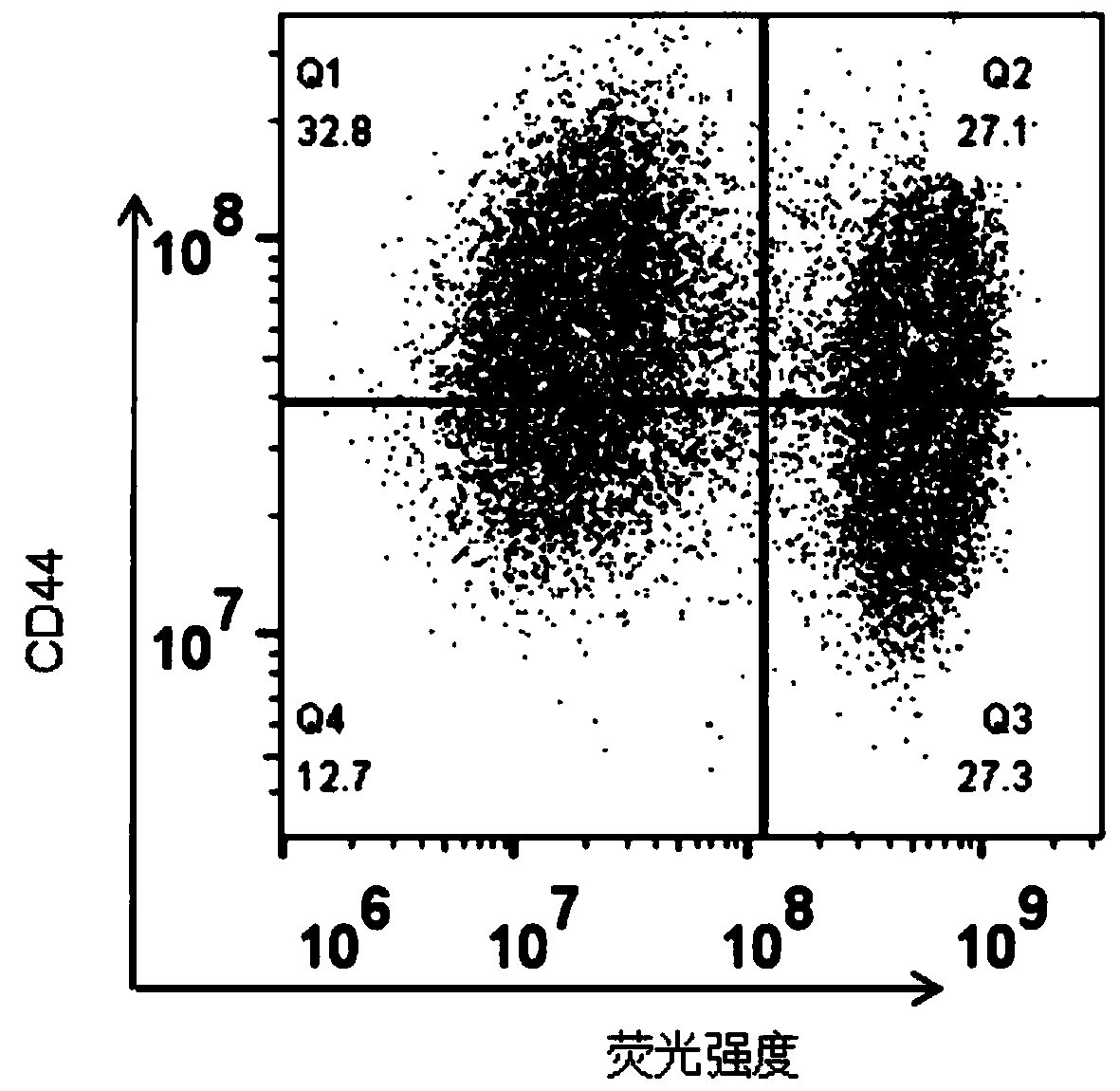Method for analyzing drug resistance of tumor cells
A technology of tumor cells and drug resistance, applied in the field of tumor treatment, can solve problems such as failure of tumor chemotherapy, and achieve simple and efficient results
- Summary
- Abstract
- Description
- Claims
- Application Information
AI Technical Summary
Problems solved by technology
Method used
Image
Examples
Embodiment 1
[0038] Dissolve 0.4g aminodextran in 25mL water and heat until dissolved. The temperature was then lowered to 30°C. Nitrogen gas was passed for 1 h, and dilute nitric acid solution containing 0.05 g of ceric ammonium nitrate was added under the protection of nitrogen gas. After 5 min, 0.06 mL of methyl acrylate was added. After 0.5h, add 0.012g of diallyl disulfide and react for 4h. After the reaction was completed, it was dialyzed at room temperature for 3 days to obtain aminodextran nanoparticles.
[0039]The aminodextran nanoparticles were dissolved in water, and the pH was adjusted to 8.5 with alkali to form an aqueous solution of aminodextran nanoparticles with a concentration of 8 mg / mL. The cyanine dye CY5.5 succinimide was dissolved in dimethyl sulfoxide to form a cyanine dye CY5.5 succinimide dimethyl sulfoxide solution (CY5.5-NHS solution) at a concentration of 10 mg / mL. The aminodextran nanoparticle solution and the CY5.5-NHS solution are mixed according to a ma...
Embodiment 2
[0041] Dissolve 1g of hydroxymethyl chitosan in 25mL of water and heat until dissolved. The temperature was lowered to 30°C. Nitrogen was passed for 1 hour, and dilute nitric acid solution containing 0.06 g of ceric ammonium nitrate was added under the protection of nitrogen. After 5 min, 0.05 mL of methyl acrylate was added. After 0.5h, add 0.012g of diallyl disulfide and react for 4h. After the reaction was completed, it was dialyzed for 3 days to obtain hydroxymethyl chitosan nanoparticles.
[0042] The hydroxymethyl chitosan nanoparticles were dissolved in water to form an aqueous solution of hydroxymethyl chitosan nanoparticles with a concentration of 5 mg / mL. The cyanine dye CY5.5 succinimide was dissolved in dimethyl sulfoxide to form a cyanine dye CY5.5 succinimide dimethyl sulfoxide solution (CY5.5-NHS solution) at a concentration of 10 mg / mL. The hydroxymethyl chitosan nano particle solution and the CY5.5-NHS solution are mixed according to a mixing ratio of 50-2...
Embodiment 3
[0044] Dissolve 0.5 g of dextran (molecular weight of 40,000 Da) and 0.5 g of chitosan in 25 mL of water and heat until dissolved. The temperature was lowered to 30°C. Nitrogen was blown for 1 hour, and dilute nitric acid solution containing 0.06 g of cerium ammonium nitrate was added under the protection of nitrogen, 0.05 mL of methyl acrylate was added after 5 minutes, 0.012 g of diallyl disulfide was added after 0.5 hours, and the reaction was carried out for 4 hours. After the reaction was completed, it was dialyzed for 3 days to obtain dextran / chitosan nanoparticles.
[0045] Dextran / chitosan nanoparticles were dissolved in water to form an aqueous solution of dextran / chitosan nanoparticles with a concentration of 10 mg / mL. Dissolve the graphene quantum dots in water to form an aqueous solution of graphene quantum dots with a concentration of 2 mg / mL. The dextran / chitosan nano particle aqueous solution and the graphene quantum dot aqueous solution are mixed according to...
PUM
 Login to View More
Login to View More Abstract
Description
Claims
Application Information
 Login to View More
Login to View More - R&D
- Intellectual Property
- Life Sciences
- Materials
- Tech Scout
- Unparalleled Data Quality
- Higher Quality Content
- 60% Fewer Hallucinations
Browse by: Latest US Patents, China's latest patents, Technical Efficacy Thesaurus, Application Domain, Technology Topic, Popular Technical Reports.
© 2025 PatSnap. All rights reserved.Legal|Privacy policy|Modern Slavery Act Transparency Statement|Sitemap|About US| Contact US: help@patsnap.com


